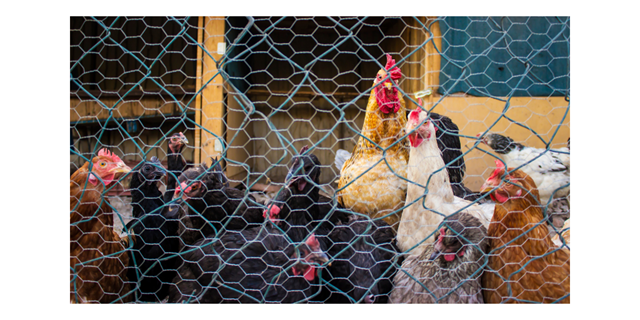What is an Extension Agent?
We are adult educators that are the go-between between Texas A&M University and landowners of each county. We take the information that the scientists at College Station come up with and turn it into words and actions every landowner can learn and understand. If we don’t have an answer for your question, we can sure point you to the person that will.
What is Biosecurity, and how do you maintain it for a backyard poultry flock?
Biosecurity is protecting your flock from outside disease that they could possibly contract from contact with other wildlife. I recommend that if you are going to let them out and you are in an area where you have wild ducks, wild geese and those type of animals coming through, you should have at least top netting. This way they can get out and move, but wild birds can’t land in their area and spread disease among your flock. Avian flu can be very expensive to treat, and top netting is an easy solution to keep your flock safe.
How do you protect your poultry flock from predators?
We get asked a lot of questions about how to secure the animals and keep them safe. Predators look at backyard chickens as an easy meal. The big recommendation is to have a secure room that they can get into. Either a chicken coop or if you have a shed they can have access to. Also, chickens don’t like to nest on the ground, so you want to have perch points that make them feel secure where they can sit. Even if you let your birds out during the day to free range, they need to be secure at night.
In addition to a secure house, we often recommend having a sturdy metal wire fence that, not only goes all the way down to the ground, but into the ground 2 – 3 inches. That will keep them from digging under the fence. The more you deter them the more they will go find an easier meal somewhere else.
It’s also good to know what kind of predators are in your area. If you are able, you can put up a wildlife camera to spot those predators that come out at night. If the predator does get to the flock, you can tell even without putting up a camera what type of predator was there by what was left behind. Certain predators may leave part of the carcass behind. Some of them, if everything is gone, they grabbed it and took it somewhere else. With other predators, you get a lot of feathers left behind. For example, foxes take the carcass away, raccoons leave a mess and some feathers because of how they go after them, and possums often decapitate the chicken and then take the body away later.
Finally, Troy says, “If you’re starting with any kind of agriculture project you’re going to have some setbacks and disappointments, but you just have to push through and keep going.”
You can always turn to your local County Extension Agent for help and advice. For more information on the Agri-Life Extension Service, click here.
To explore Hi-Pro’s full range of Poultry Feeds and supplements, click here.

